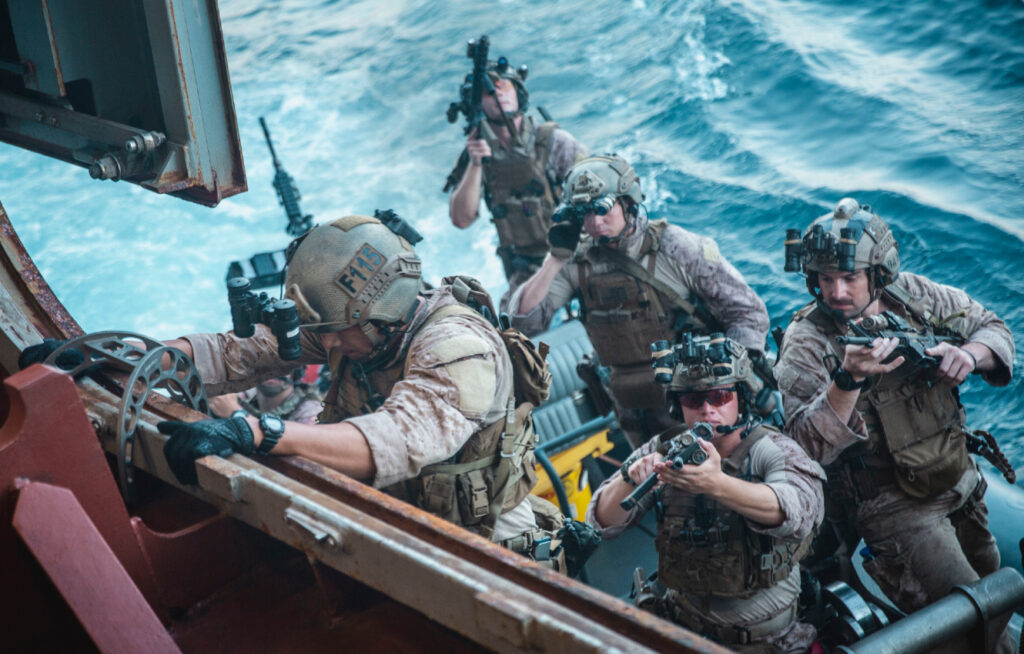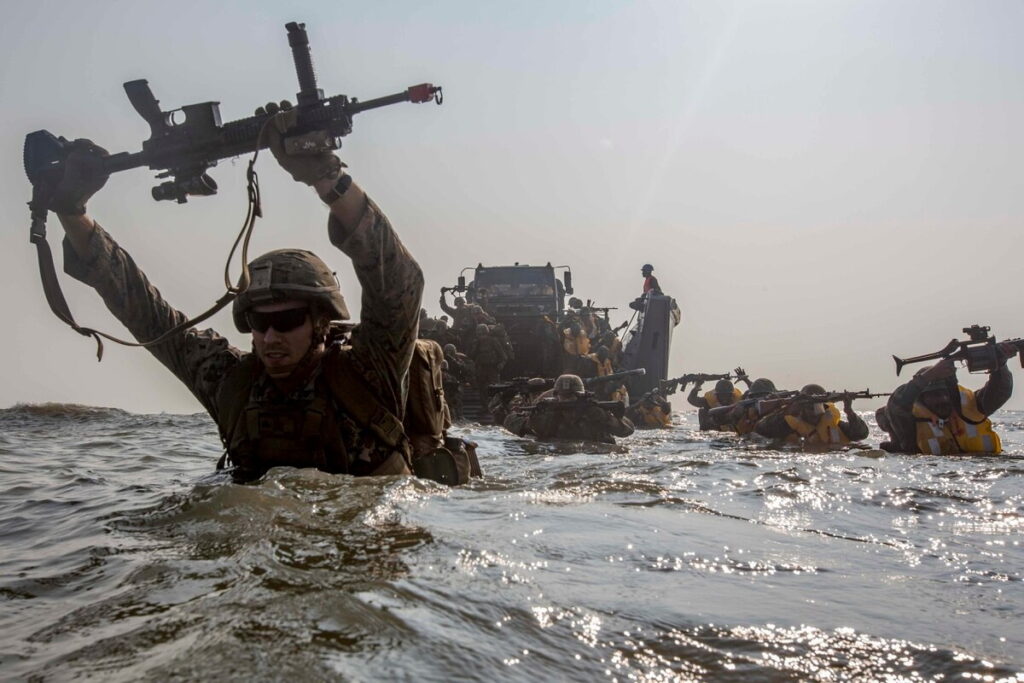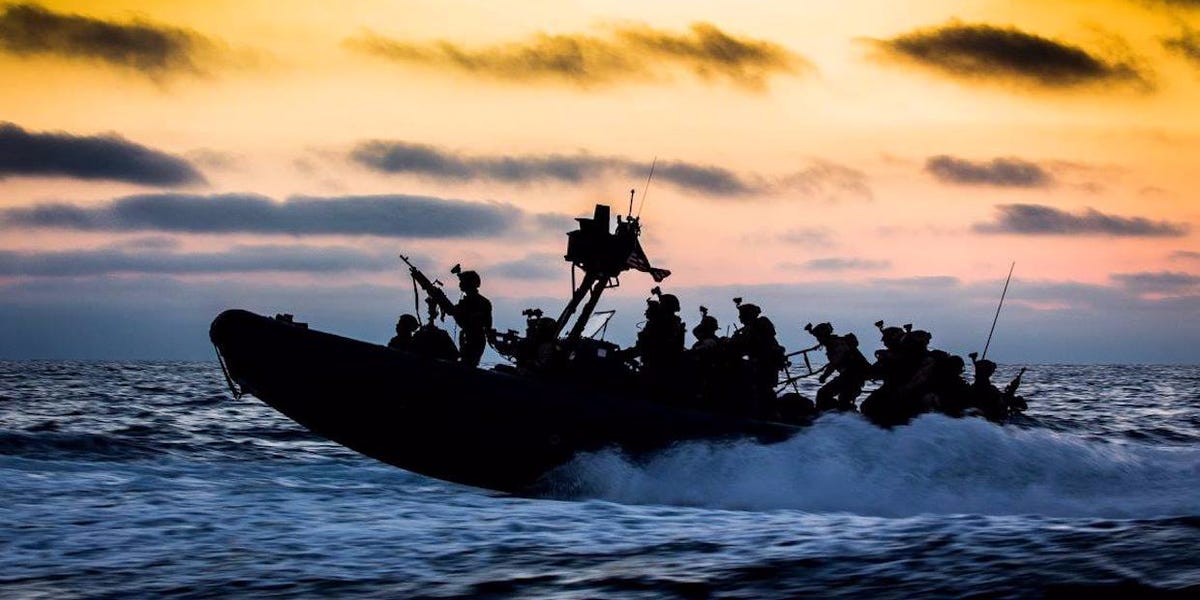Marine Corps Unit Structure
Marine Corps forces vary in the organization depending on the needs and manpower of a unit:
- Marines’ smallest division is a fire team, which is three Marines and a team leader, usually a corporal.
- Three fire teams (12 Marines) comprise a squad led by a squad leader, usually a sergeant.
- Three squads (39 Marines) comprise a platoon with a leadership team of a platoon sergeant and platoon commander (usually a 1st or 2nd lieutenant). The platoon leadership also benefit from a platoon guide and a messenger and often have a Navy Medical Corpsman or several attached from the battalion’s medical platoon.
- There are many different types of platoons. The two most common are rifle platoons and weapons platoons. A rifle company comprises three rifle platoons and a weapons platoon, totaling over 120 Marines, with a company headquarters: a captain as commanding officer, first lieutenant as an executive officer, company gunnery sergeant, property NCO, and a messenger/driver.
- There are other company organizations, such as a weapons company and a headquarters and service company, which contains many specialist platoons such as scout snipers, service, communications, and medical. Companies are also sometimes referred to as ‘batteries,’ like in the artillery corps. At least 400-strong, an infantry battalion contains three rifle companies, a weapons company, and a headquarters and service company. They are headed by lieutenant colonels, with majors acting as XO.
- Next up from a battalion is a regiment. A regiment totals over 1200 Marines and is led by a colonel, with a lieutenant colonel as their XO. The structure is three battalions and a regimental headquarters company.
- Finally, a Marine division, led by a major general and assisted by a brigadier general, typically consists of three infantry regiments, an artillery regiment, a range of specialist battalions (such as reconnaissance, assault amphibian, tank, light armored reconnaissance, combat engineer), and a headquarters battalion.

Marine Corps Expeditionary Units
In addition to this standard organization, there are separate units with special tasks and support.
- The MEU (pronounced me-you) stands for Marine Expeditionary Unit. In the modern era, a MEU is part of the United States Fleet Marine Force, a quick reaction force deployed and ready for immediate response to crises. Troop strength is around 2,200 and features a reinforced infantry battalion, a composite medium tiltrotor squadron offering aviation combat capacity, a combat logistics battalion providing support services, and a company-size command element. The MEU is usually commanded by a colonel and deployed from amphibious assault ships. Typically they are embarked onto an expeditionary strike group’s amphibious warfare ships, with escort warships and submarines protecting the force from other threats.
- Larger than a MEU is an MEB or Marine Expeditionary Brigade. This Marine air-ground task force comprises around 14.5 thousand Marines and sailors, with a reinforced infantry regiment, composite Marine aircraft group, a combat logistics regiment, and an MEB command group. Commanded by a general officer, such as a brigadier general, can function as a part of a joint task force or as the leader of a Marine Expeditionary Force, or simply alone. It can conduct missions across the full range of military operations.
- The MEF, Marine Expeditionary Force, is the main combat formation of Marine Corps operations. There are three in existence, one based in Okinawa, Japan, one in Camp Lejeune, North Carolina, and one at Camp Pendleton, California. Each includes a MEF Information Group as its command, a Marine division, a Marine aircraft wing, and a Marine logistics group. It also contains a Special Operations Training Group. A MEF consists of up to 48,000 Marines.
Famous Marine Units
The Marines have sired a few legends in their over 240-year history. One of these is the Marine Raiders, an elite special operations force readied for duty in the Pacific theater of World War II. The 1st Marine Raiders Battalion and 2nd Marine Raiders Battalion were the first special operations forces to see combat. However, the shape of the theater changed, and the need for light, deep-striking units diminished. The 1st Marine Raider Regiment was redesignated the 4th Marine Regiment after the previous 4th Marine Regiment had surrendered to the Japanese in the Philippines, under relentless assault and incredible casualties. The new 4th Regiment earned multiple distinctions in Guam and Okinawa. At the war’s close, they formed part of the occupying force, liberating the survivors of the former 4th from their POW camps.
In modern times, the Marine Special Operations Regiment has been renamed the Marine Raider Regiment to reflect the continuation of excellence and acknowledge the debt that modern Marine special operations owe to the trailblazers of the WW2 period.

Another highly reputed Marine unit is the 5th Marine Regiment, known as the Devil Dogs. They are the most highly decorated regiment in the United States Marine Corps. It is said that they earned the nickname from their first deployment, during World War I when they participated in the fierce Battle of Belleau Wood. The American forces suffered over 1,800 deaths breaking the German position and were reduced to fighting with bayonets and hand to hand. Their incredible efforts earned the Germans’ fear and respect and the French forces’ admiration and gratitude. To this date, the 5th is one of only two Marine regiments permitted to wear the Fourragère, a braided cord used in French military culture to distinguish units that have shown incredible gallantry in battle.
Reconnect With People in Your Marine Corps Unit
Together We Served offers the opportunity for US service members and veterans so that they can find other service members they worked and trained alongside. When you sign up, you can enter your service record, including your boot camp, infantry company, tank battalion, or whichever unit you were a part of and dates you were in. Our system will show you others who were at the same boot camp or unit at the same time. Sign up today.

0 Comments